Lancia in rallying: The champagne years
When Lancia exited the WRC, it left behind a dominant record no marque has since beaten. David Evans explains its rise
There was a moment, a pause, and then the realisation – yes, that had just happened. Lancia team principal Cesare Fiorio explained the result of the 1987 Monte Carlo Rally to the media.
Invited to agree with his account, Lancia’s second-placed driver Juha Kankkunen thought about it and then declined.
Silence settled over Lancia’s post-event press conference in the Beach Plaza. The Italians had dominated the first chapter of world rallying’s brave new post-Group B era and then shot itself unerringly in the foot. Kankkunen remembers the event and the moment Lancia’s incumbent Italian star Miki Biasion was favoured for the win.
“They hired me,” says the Finn, “as a World Champion, but I was not allowed to win. Lancia was the best team. But the politics… Sometimes the politics was too much.”
He concluded that first outing with Lancia by going for pizza with Keke Rosberg. Politics was never far from the top of the Lancia and Fiat Group agenda. The toing and froing from favour wasn’t restricted to drivers. Such policy extended to the manufacturers. Ultimately, Lancia’s exit from a world it ruled was steered by politics. Alfa’s arrival in and domination of touring cars wasn’t done on a shoestring…
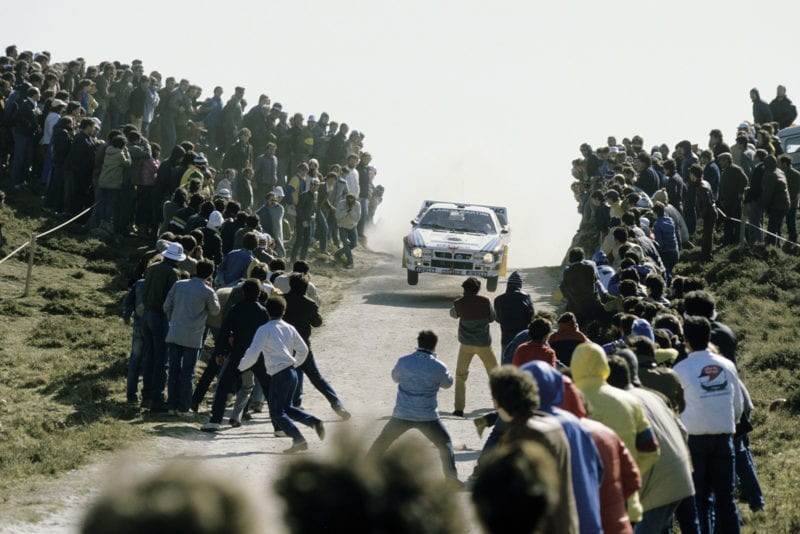
Alén took his 037 to second in Portugal, and won just once in 1984
Only Lancia has weathered the all-French force that was Sébastien Loeb and Citroën. The Stratos, 037 and Delta combined to seat Lancia at the head of the table – a position it retains with 10 world titles, compared to Citroën’s eight. In four of those years, the Turin team did the double and clinched the drivers’ crown as well.
But the 1987 Monte was an inglorious start to its dominant and record-breaking era, the origins of which can be traced back through Group B and into Group 4.
“For the first time, a brand built a car solely to win the WRC”
Fiorio laid the foundations for greatness a decade ahead of any consideration of sending power to all four wheels of a rally car. He laid those foundations with what remains one of rallying’s most purposeful, beautiful and successful cars ever: the Stratos.
For the first time, a manufacturer built a car with one single aim: to win the World Rally Championship. It did just that, for three years straight. But then came Fiat Group’s decision to shift the emphasis to Fiat’s 131. Fiorio argued for lengthening the Lancia’s life, but it was to no avail.
“It was,” he says, “a political point from Fiat. I was sad to see Stratos go, but I was in charge of Fiat and Lancia, and I said: ‘Okay, we are soldiers and we make war with the arms that you give us.’”
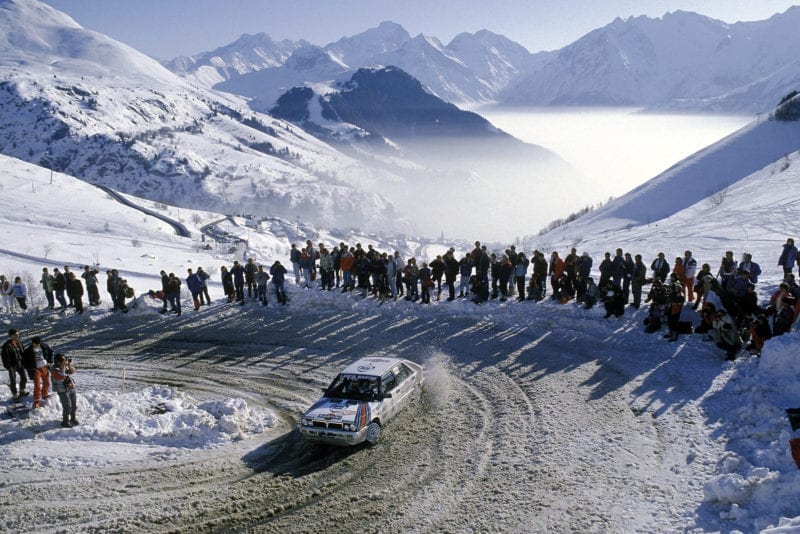
Lancia’s 1987 Monte Carlo controversy included protests from Mazda over its pace
The natural successor to Lancia’s Stratos was its first Group B car, the 037. By the time it arrived, the Quattro revolution had truly begun. Lancia knew that its new car was two driven wheels short of the full package, but there was nothing it could do. Work had begun on its successor, but when Group 4 became Group B in 1983, that Delta moment was still a couple of years away.
Nini Russo was Lancia’s team manager and, like his colleagues, feared the outcome of what on paper looked to be a one-sided fight in 1983. “We had two-wheel drive,” says Russo, “and they [Audi] had four-wheel drive. We had to find a solution to try to compensate.” That necessity to find another way to defeat Hannu Mikkola, Stig Blomqvist and Michèle Mouton helped define Lancia as the WRC’s most complete manufacturer and shape its future glories.
“We were the first to make some changes in the rally,” says Russo. “We created this strategy of changing tyres in the middle of the special stages. This was to try to compensate for this gap. That was quite famous but, as well as that, look at the history: we were the first to use the aeroplane for communications, we had a doctor, the physio, the catering, the helicopters – we were always one step ahead of the others and then the others would copy us. These things, these commodities, they didn’t make the car faster, but they gave us the chance to compensate.”
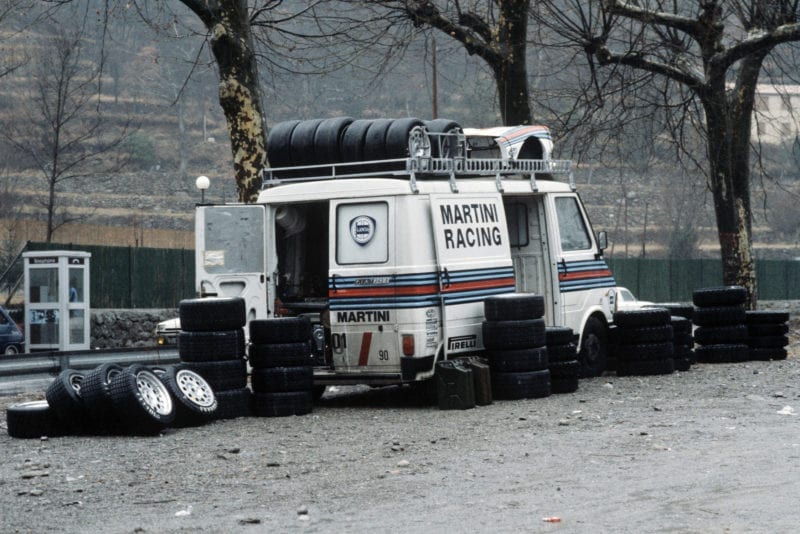
Lancia’s tyre change strategy was innovative
And it wasn’t just on the rallies where helicopters made the difference. Markku Alén recalls trying to get his notes right on a particularly tricky Monte stage.
“I was in recce, driving this road all the time,” he says. “The team had a 037 recce car for me to drive in the stage. I get to the end, get out the car and into a helicopter, flying me back to the start and into another 037 to drive the stage again. Get to the finish, do the same again. That was the Lancia way.”
Based on the Beta Montecarlo road car, the 037 was a fabulously balanced and powerful car – fast enough to land Lancia an unlikely manufacturers’ championship in 1983. With Walter Röhrl and Alén leading the team, there was always a chance for the 037. A dominant one-two on a snow-free Monte opened the account, with Röhrl delivering an outstanding debut drive aboard the new car. A similar result with Alén first came in Corsica months later. With Lancia two points ahead, Audi expected to steamroller the following Acropolis Rally.
But the Quattros failed, and Röhrl delivered. Röhrl picked his way around the rocks, made use of the 037’s leggy suspension travel, and set up shop, watching and waiting from Mikkola’s shoulder. When a pin holding the boot on the Finnish-flagged Quattro broke, the tailgate opened and yanked vital oil pipes with it. The engine was finished, and it was another one-two for Lancia.

Röhrl won Monte ’83
Lancia was playing to its strengths, evolving the 037 along the way and doing precisely what Russo said. Giorgio Pianta was Lancia’s chief engineer on the 037. According to him, it was the supercharged 2-litre engine that was giving them the edge.
“People at Audi,” he says, “thought it was the horsepower that was making the car fast. It wasn’t. We had just over 300[bhp]. It was the torque; we could be going from nothing to 165kph in just 350 metres.”
Röhrl purrs at the memory of that engine, and car. “If you wanted, you could just leave the car in fifth gear. It would pull. All the time, there was power. The engine was the reason the 037 was winning in this season. But also, the chassis was perfect. And the steering. And the brakes. And the suspension.”
Lancia sealed success in the first season of Group B with an Alén victory at Sanremo. Having re-signed for what would be an 11th successive year with the Fiat Group on the eve of that event, he was confident of the future.
“Talk was,” recalls Markku, in trademark staccato Finnish, “that a four-wheel-drive car was coming. But for me, at the time, the 037 was the car. I liked the Stratos, you know, but this car [037] is a racing car. When I drive in Finland, I have the feeling to really fly. I am having to change pace notes all the time, braking 20 metres later.”
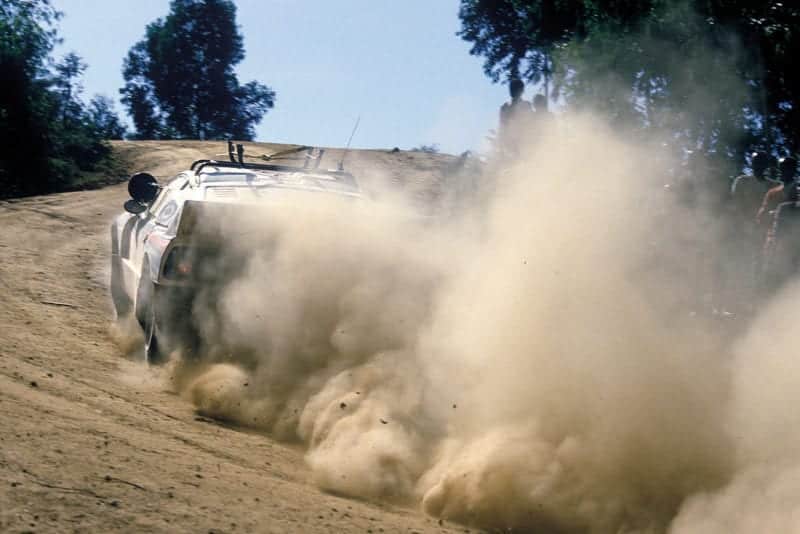
Alén on his way to fourth on 1984 Safari.
Lancia’s four-wheel-drive solution, the Delta S4, was delayed, much to the frustration of Alén and countryman Henri Toivonen. But when it landed in Nottingham for the 1985 RAC Rally, it raised the bar. By then Audi’s force had faded, and Peugeot was the pace- setter with its 205 T16. Jean-Claude Vaucard, the man behind the all-conquering 205, remembers the arrival of the S4.
“Even when they had the 037, we had to be careful with them,” says Vaucard. “But when the S4 came… it was a big fight.”
In terms of performance, everything was pushed to the absolute limit. Turbocharging and supercharging the 1759cc engine instantly delivered 450bhp. Even though he only had a handful of miles in the car ahead of the RAC, Toivonen knew his car had come. Speaking before the event, he said: “This four-wheel- drive car will suit me well. All my life I’ve driven with left-foot braking to balance the car and to keep it slightly sideways. Almost always, I’m ready to get the tail out.”
Few could take the S4 to its absolute limit, and fewer still could let it loose on that limit. Toivonen could, and did. Back-to-back world rally wins bridged the end of the 1985 season and the beginning of the ’86 campaign.
“Henri was surely the driver uniquely capable of using 100 per cent of the potential of the S4,” recalled then development engineer Sergio Limone. Then came Corsica, tragedy, and the end of the road for Group B. By the end of the season, these spaceframe rocketships would be banished in favour of mass-production cars. From 1987 onwards, a presence at the forefront of world rallying required a manufacturer to have produced at least 5000 road-going examples of its car.
Ford was caught between two stools. The RS Cosworth produced plenty of power, but all of it went to the rear. The XR4x4 had a driveshaft at each corner, but the naturally aspirated V6 lump offered 100 fewer horses than the Cosworth’s blown 300bhp unit.
Mazda’s 323 had a turbo and total traction, but its 1600cc motor left it short on grunt. Audi’s 200 Quattro was overweight and ungainly. Prodrive delivered a lightweight BMW M3 racer tuned to the stages. Like the big-winged Ford, the M3 went well on asphalt and fast gravel, but throw some dirty corners at it and it was no match for its rivals.
Nothing was a match for the Delta HF 4WD. To the conspiracy theorists – not exactly thin on the ground through the 1980s when global motor sport governance and Italian manufacturers were involved – it all seemed rather convenient. FISA president Jean-Marie Balestre’s decision to ban Group B from the end of 1986 played into the hands of Lancia.
Turbocharging Delta road cars was not new; the HF road car had been around since 1983, but only in front-wheel drive. But Lancia was exonerated by the fact that the four- wheel-drive version was revealed at the Turin Motor Show, before the 1986 Tour de Corse.
Fate, kismet, destiny, call it what you will. Lancia had an opportunity and couldn’t get its Chivasso factory churning 4×4 Deltas out quickly enough. By the summer of 1986, the rally version was putting down serious testing miles. A steamroller was being prepared, and it wouldn’t be to everybody’s liking.
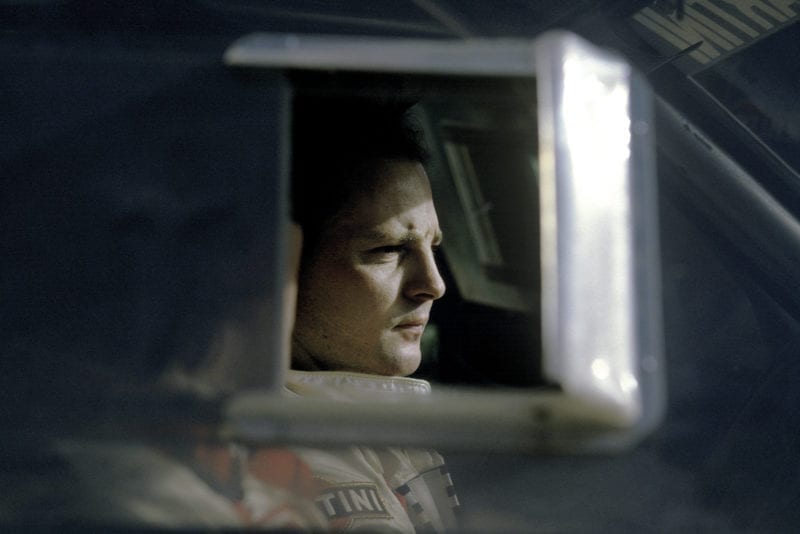
Biasion won his first WRC rally in ’86, helping to fill the Toivonen void
Alén: “I had come from the Olympus Rally [the final round in 1986], from a big and good car: 600 horsepower or something like that. I went to the first test for the Group A car. I drove the car and said: ‘Hey, boys, what is this you have given me? Where’s the engine?’ I had 200 horsepower or something like that.” By the time the Delta reached the start of the new era, the power was up to around 250bhp. Not the highest output in 1987, but sitting in a well-tested car of near-perfect proportions. The steamrollering could begin. The bad blood in the Beach Plaza is now long forgotten. Limone, the man responsible for turning that Turin Motor Show car into a rally winner in half a year, was happy.
“The basic car,” he says, “was a good starting point. We were clever to use the potential of the car and the rules at 100 per cent immediately.
“That 1987 win in Monte Carlo produced great enthusiasm in the management. That gave us the opportunity to ask [for] improvements on the production car, so we then had the Integrale, the Integrale 16-valve and HF Integrale – the car we called Deltona – a few years later.”
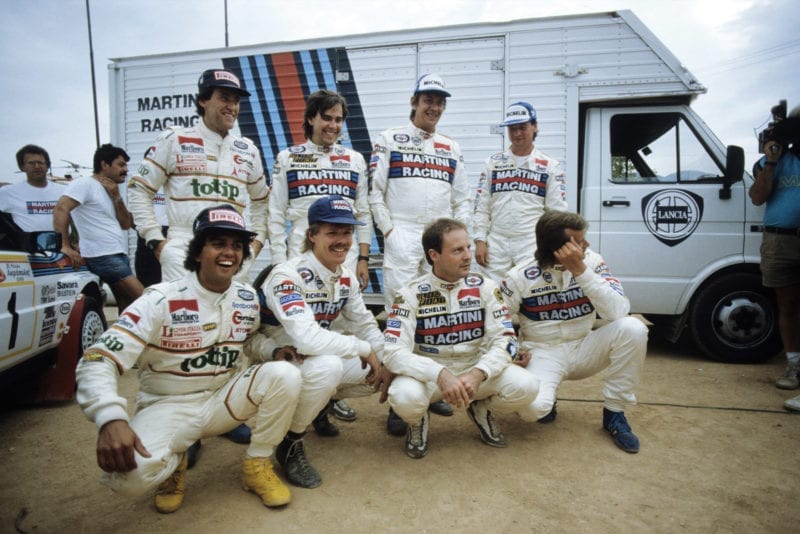
Acropolis 1988 (bottom, left to right) Fiorio, Kankkunen, Biasion and Alén with their co-drivers behind
Each evolution was a world-beater. Sure, Toyota came along, and the Celicas got in the way, but the only thing to halt the Delta was Lancia’s decision to withdraw from full works- backed rallying at the end of 1991.
Russo continues: “People used to talk all the time about the budget. They thought we had the biggest budget, but we used money well. With the helicopters, we saw the cars all the time and kept them running on the road – we had a smaller team [of mechanics] in the helicopters. We didn’t need lots of people on the ground. And winning in Monte always gave a big help to the budget. The marketing people used to say victory there would pay [for] almost the whole season. Winning was everything for us, and this is what made Lancia; people would put their hand in the fire for this team. I love that first Delta; this is the car of my heart. This started the greatest period for Lancia.”
Great as any cars are, they’re only as good as the drivers directing them. In Biasion, Didier Auriol, Alén and Kankkunen, they had a good portion of early Group A’s leading talents. Kankkunen did, of course, go on to win the 1987 title, despite a tricky start. But further evidence of the commitment that underpinned Lancia’s desire to be the best of the best as the 1980s turned to the ’90s came after the 1989 1000 Lakes Rally.
Then driving for Toyota, Kankkunen was furious at losing his home round of the championship after his Celica caught fire. Sensing an opportunity, director-general of Abarth (Lancia’s sporting arm) Claudio Lombardi reached out to a former driver.
In typical Lancia style, Lombardi didn’t call Laukaa from his Turin office. No. He knocked on Kankkunen’s front door. The Finn smiles at the memory. “It was a surprise to see them,” he says. “But it showed what Lancia was thinking. I signed for three years.”
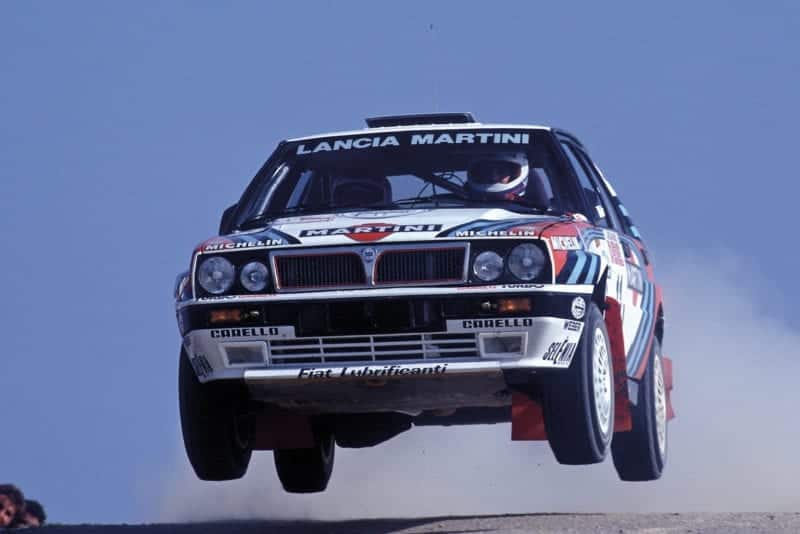
Lancia won on Sanremo ’90, Auriol leading a one-two
A year later, in 1991, Kankkunen would celebrate a second title with Lancia. Twelve months on and the Delta had won its sixth and final manufacturers’ title. Fiat decided the time had come to go racing.
“In those days, it was only news when we didn’t win,” says Russo. “We made the last Delta (HF Integrale, the Deltona) in 1991, and it was run by Jolly Club in 1992. But it wasn’t really. We were there, but we were in the shadows. It was a complete shock when the news came that Lancia was finished in rallying. We were taken into a room – but my wife called me. She knew before me; it was all over the news. Lancia was finished.”
The steamroller had ran out of gas.
